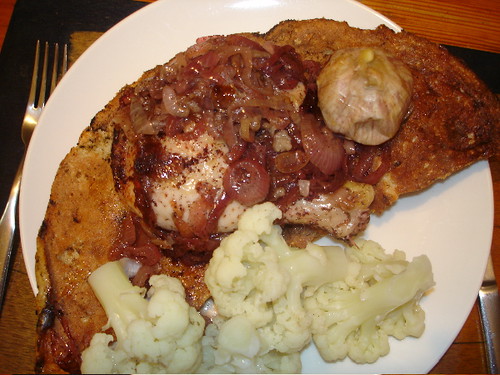Rosh Hashana, the Jewish New Year, is a holiday for starting anew. So for this year’s holiday I decided to create my own signature honey cake, something special to welcome the new promise of a sweet year to come. What would be better than to take a honey cake and top it with thinly sliced apples that were poached in white wine, and top it with a luscious 72% dark chocolate glaze. Actually, it is so delicious as to be positively sinful. Fortunately, we have just over a week to enjoy it, confident in the knowledge that on Yom Kippur we will be able to atone for this sin.
This year, as in every year, we celebrated Rosh Hashana with family and friends in Jerusalem. We thought of loved ones we missed, we laughed , and we thought of all of the things we want to do to make this year more sweet, more healthy, more prosperous, and most importantly more peaceful.
May you be inscribed in the Book of Life and we hope you have happy, healthy, prosperous, and peaceful new year.
We would also like to wish Eid Mubarak to all of our Muslim friends.
Chag Sameach,
Baroness Tapuzina and Mr BT
- 3 medium granny smith apples peeled and cored
- 1/2 bottle Riesling white wine
- 2 cinnamon sticks
- 5 whole cloves
- 2 large pieces of orange peel
- 1 sheet of parchment paper
- 1/2 cup dried sugarless cranberries
- 1/4 cup candied orange peel
- 1/2 cup walnuts chopped
- 800 g 6 cups + 3 tablespoons spelt whole grain flour or all-purpose flour
- 1-1/2 cups sugar
- 2 heaping teaspoons cinnamon
- 1 teaspoon ground cardamom
- 2 teaspoon ginger
- 1/2 teaspoon cloves
- 1 teaspoon freshly ground nutmeg
- 1/4 teaspoon allspice
- 1-1/2 cups honey
- 1 cup oil
- 4 eggs
- 2 tablespoons instant espresso coffee
- 1 cup boiling water
- 2 level teaspoons baking soda
- Zest of two medium oranges
- 200 g 7oz 72% premium dark chocolate
- 50 g 3.5 tablespoons butter or margarine
-
Place the apples in a medium size pan and add the spices and orange peel. Cover with the white white and place the parchment paper on top of the apples. Poach on medium heat and reduce the heat to a simmer. Poach the apples for 15 minutes or until they are tender, but not mushy. Remove from the poaching liquid, put them in a covered container and refrigerate until cold. This can be done the day before baking.
-
Preheat the oven to 170C (325F). Grease a 22cm (8-inch) round spring-form pan and a loaf pan.
-
Place the cranberries, orange peel, and walnuts in a food processor and grind until each ingredient is in fine pieces. Be careful not to grind it into a paste. Set aside.
-
Mix the flour, sugar, and spices in a bowl. Add the honey, oil and eggs, and whisk into a smooth batter. Dissolve the coffee into 1 cup of boiling water. Add the baking soda to the batter, and then add the coffee. Gently fold in the orange rind, and the cranberry, candied orange and walnut mixture.
-
Pour half of the batter into round pan and the other half into the loaf pan. Bake for approximately 45 minutes until the cake is dark brown and the toothpick is clean with a few crumbs adhering. Depending on your oven, you may have to bake your cakes for an additional 10-15 minutes.
-
Cool in the pan until completely cooled. The cake a be prepared up to two days ahead.
-
Just before assembling the cake, melt the chocolate over a water on low heat and add the butter or margarine. Cool for 5 minutes.
-
Slice the apples into thin slices and place on top of the round cake. Place the chocolate glaze in the middle of the cake and spread to the edges of the top of the cake. Let chocolate glaze will thicken as it cools.












































